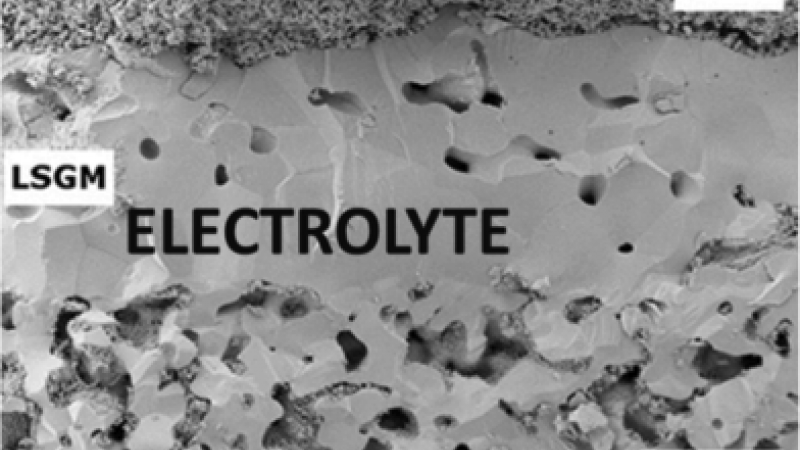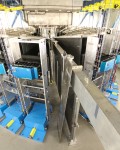Research Contact: Ana B. Munoz-Garcia December 2012, Written by Agatha Bardoel
Fuel cell technology is one potentially very efficient and environmentally friendly way to convert the chemical energy of fuels into electricity. Solid-oxide fuel cells (SOFCs) can convert a wide variety of fuels with simpler, cheaper designs than those used in liquid electrolyte cells.
Using the Powder Diffractometer at the Spallation Neutron Source, researchers experimentally characterized the promising new SOFC electrode material strontium iron molybdenum oxide─Sr2Fe1.5Mo0.5O6-δ (SFMO). Combining the experimental results with insights from theory showed that the crystal structure is distorted from the ideal cubic simple perovskite and instead belongs to the orthorhombic space group Pnma.
The presence of oxygen vacancies was found in the synthesized material. DFT + U theory predicts essentially the same concentration of oxygen vacancies.
Theoretical analysis of the electronic structure allowed researchers to elucidate the origin of the non-stoichiometry and the mixed ion-electron conductor character that is so important for intermediate temperature fuel cell operation.
Research conducted at the Spallation Neutron Source was funded by the US Department of Energy Office of Basic Energy Sciences.
Published Work: Ana B. Munoz-Garcia, Daniel E. Bugaris, Michele Pavone, Jason P. Hodges, Ashfia Huq, Fanglin (Frank) Chen, Hans-Conrad zur Loye, and Emily Ann Carter, “Unveiling structure-property relationships in Sr2Fe1.5Mo0.5O6-#, an electrode material for symmetric solid oxide fuel cells,” J. Am. Chem. Soc. 134 (15), 6826–6833 (2012); DOI: 10.1021/ja300831k.





